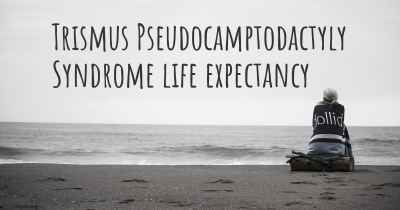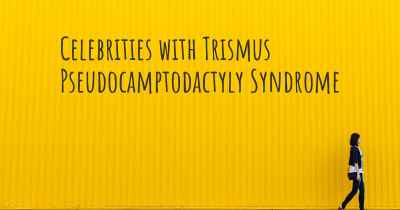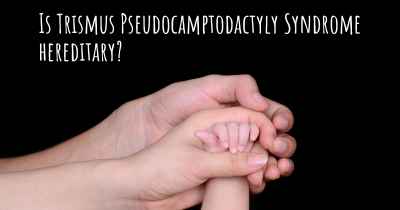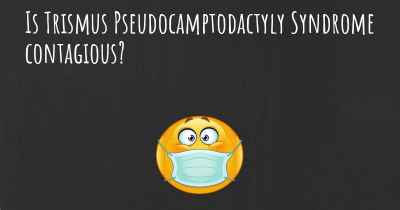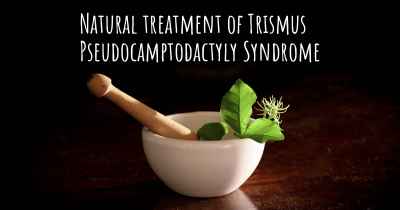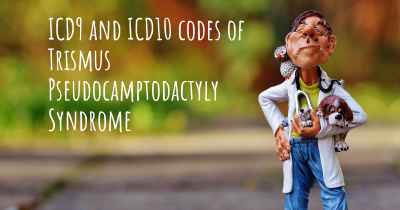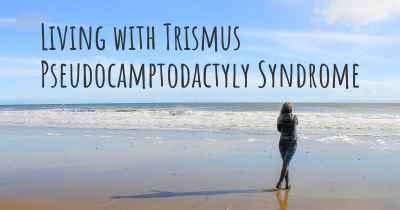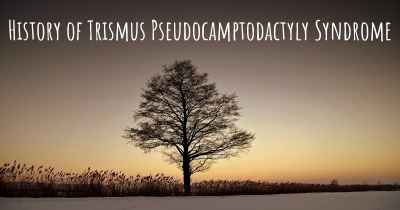Trismus Pseudocamptodactyly Syndrome diet. Is there a diet which improves the quality of life of people with Trismus Pseudocamptodactyly Syndrome?
Are you aware of a diet that can improve the quality of life of people with Trismus Pseudocamptodactyly Syndrome? Is there a diet that is suggested to avoid when having Trismus Pseudocamptodactyly Syndrome? See if there is a diet that can improve the quality of life of people with Trismus Pseudocamptodactyly Syndrome, recommended and to avoid food when having Trismus Pseudocamptodactyly Syndrome
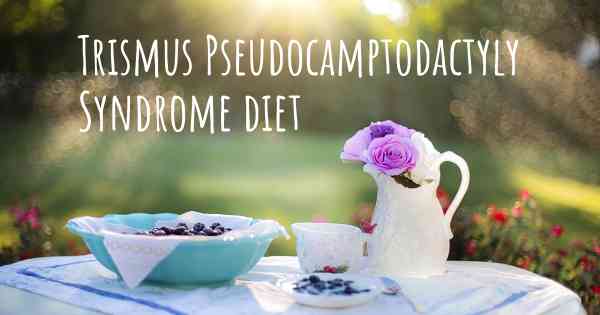
Trismus Pseudocamptodactyly Syndrome Diet
Trismus Pseudocamptodactyly Syndrome (TPS) is a rare genetic disorder characterized by the limited ability to open the mouth (trismus) and the abnormal bending of the fingers (pseudocamptodactyly). While there is no specific diet that can cure or reverse TPS, maintaining a healthy and balanced diet can help improve the overall quality of life for individuals with this condition.
Importance of Nutrition
Proper nutrition plays a crucial role in supporting overall health and well-being. It can help manage symptoms, promote optimal growth and development, and enhance the body's ability to fight infections. While there is no specific dietary intervention for TPS, a well-rounded diet can provide essential nutrients that support muscle function, bone health, and overall vitality.
Key Nutrients for TPS
Protein: Protein is essential for muscle growth and repair. Including lean sources of protein such as poultry, fish, legumes, and tofu in the diet can help maintain muscle strength and function.
Calcium and Vitamin D: These nutrients are crucial for bone health. Including dairy products, leafy greens, fortified plant-based milk, and exposure to sunlight can help meet the body's calcium and vitamin D needs.
Omega-3 Fatty Acids: Found in fatty fish, flaxseeds, chia seeds, and walnuts, omega-3 fatty acids have anti-inflammatory properties that may help reduce inflammation and improve joint health.
Vitamin C: This vitamin plays a role in collagen synthesis, which is important for maintaining healthy connective tissues. Citrus fruits, berries, kiwi, and bell peppers are excellent sources of vitamin C.
Antioxidants: Including a variety of fruits and vegetables in the diet can provide antioxidants that help protect cells from damage and support overall health.
General Dietary Recommendations
While there are no specific dietary restrictions for individuals with TPS, it is important to follow general healthy eating guidelines:
- Consume a variety of fruits, vegetables, whole grains, lean proteins, and healthy fats.
- Avoid or limit processed foods, sugary snacks, and beverages.
- Stay hydrated by drinking an adequate amount of water throughout the day.
- Consider working with a registered dietitian who can provide personalized guidance and support.
Adapting to Eating Challenges
Individuals with TPS may face difficulties with chewing and swallowing due to trismus. In such cases, it is important to modify the diet to ensure adequate nutrition:
- Texture Modification: Soft or pureed foods can be easier to chew and swallow. This may include mashed vegetables, soups, smoothies, and yogurt.
- Small and Frequent Meals: Eating smaller, more frequent meals can help manage difficulties with chewing and swallowing.
- Assistive Devices: Using adaptive utensils or tools, such as straws or special grips, can make eating and drinking easier.
- Speech Therapy: Working with a speech therapist can help improve swallowing techniques and provide strategies to overcome eating challenges.
Conclusion
While there is no specific diet that can cure or reverse Trismus Pseudocamptodactyly Syndrome, maintaining a healthy and balanced diet is important for overall well-being. Including nutrient-rich foods, staying hydrated, and adapting to eating challenges can help improve the quality of life for individuals with TPS. It is always recommended to consult with healthcare professionals, including registered dietitians and speech therapists, for personalized guidance and support.
